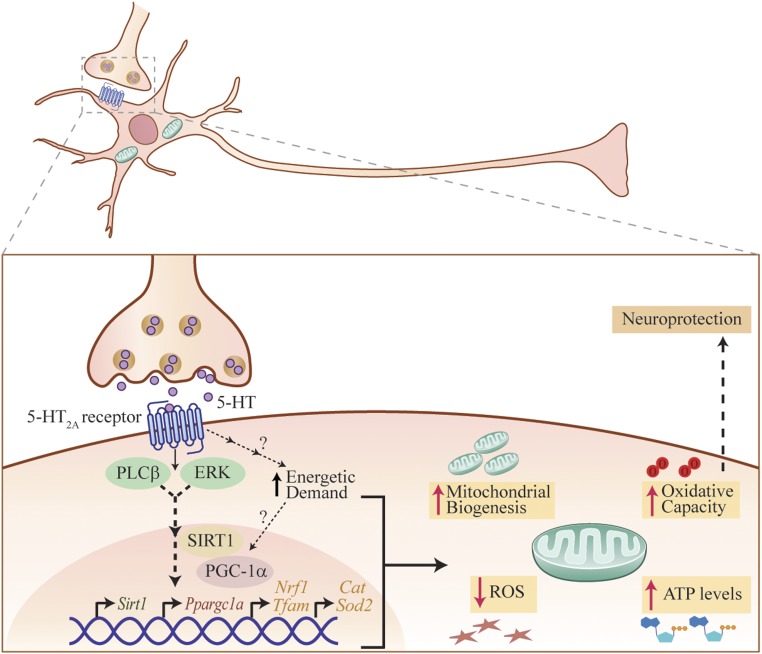Fig. 6.
Schematic depicting the putative mechanism for 5-HT effects on mitochondrial biogenesis and function. The model depicts 5-HT binding to the 5-HT2A receptor expressed by cortical neurons, which evokes an activation of the PLC and MAPK signaling pathways. This recruitment of PLC and MAPK signaling, likely through a multiple-step process, results in recruitment of SIRT1, which is a key regulator of mitochondrial biogenesis. SIRT1 may then modulate PGC-1α expression, which has been shown to be a master regulator of mitochondrial biogenesis and, in turn, could enhance NRF1 and mitochondrial transcription factor TFAM expression, thus mediating effects of 5-HT on mitochondrial biogenesis. Our results indicate that SIRT1 is required for the effects of both 5-HT and 5-HT2A receptor agonists on mitochondrial biogenesis. In addition, 5-HT and 5-HT2A receptor stimulation leads to an increase in basal OCR, which may reflect a heightened energetic demand that could, in turn, drive a transcriptional program, leading to a subsequent adaptive increase in mitochondrial content and function. Furthermore, 5-HT and 5-HT2A receptor agonists also enhance ATP production and increase OXPHOS, maximal respiration, and spare respiratory capacity. In addition, 5-HT also reduces cellular ROS levels and enhances expression of antioxidant enzymes in cortical neurons. This enhancement in mitochondrial biogenesis and function may contribute to the effects of 5-HT and 5-HT2A receptor agonists in conferring neuronal protection from excitotoxic and oxidative stress.

